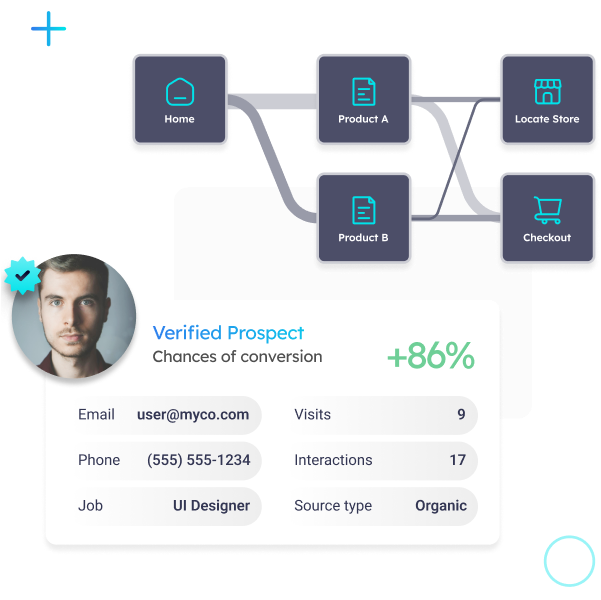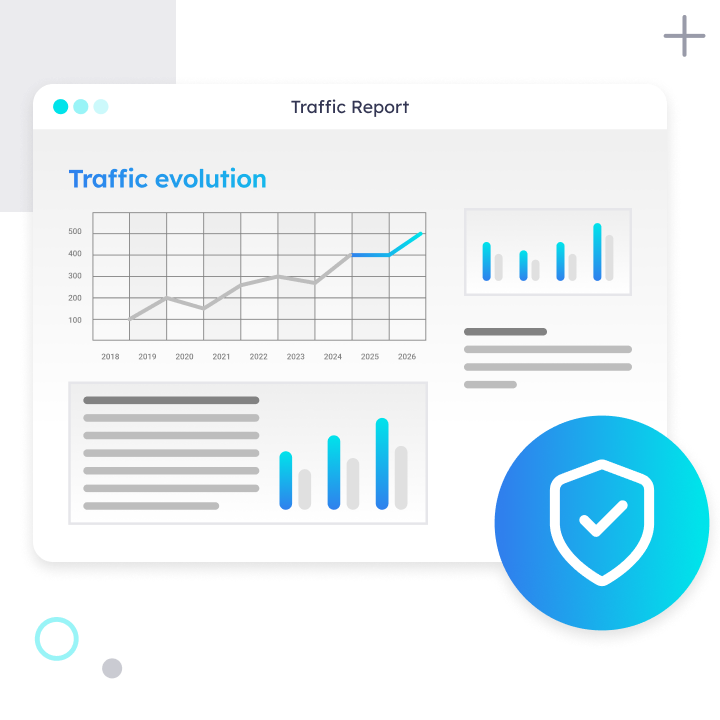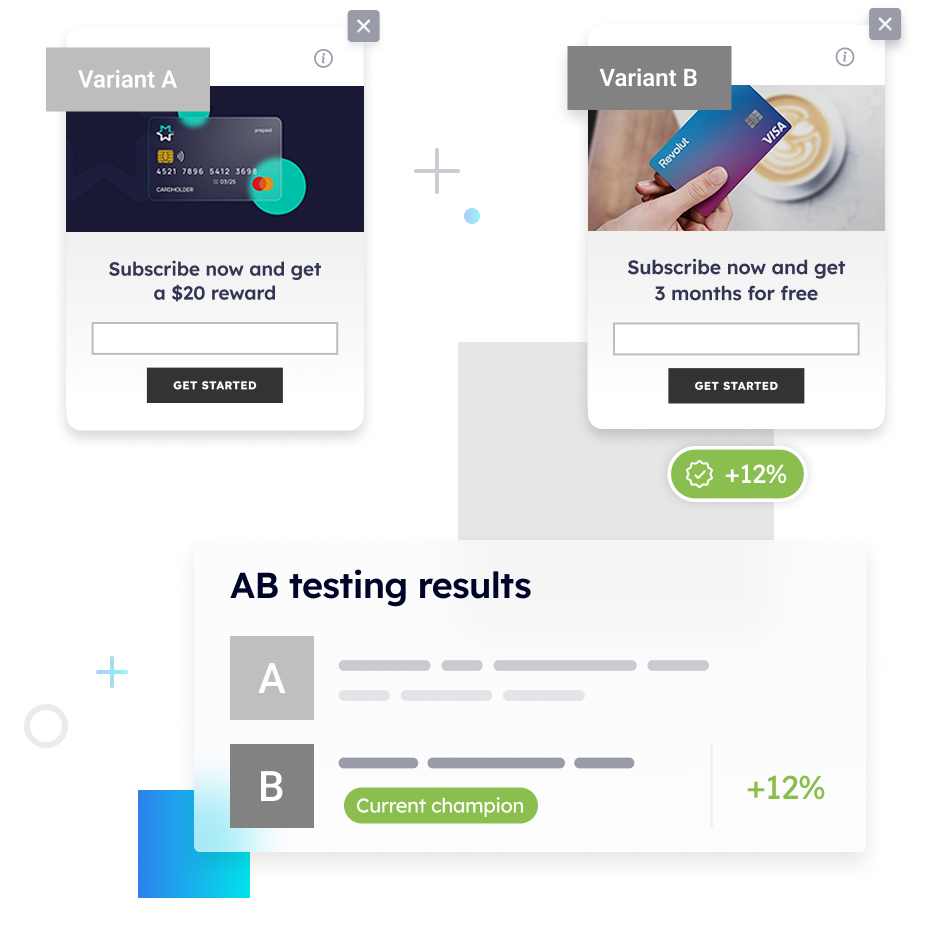![How to Create a Customer Journey Map [Free Template Included] Featured Image How to Create a Customer Journey Map [Free Template Included] Featured Image](https://pathmonk.com/wp-content/uploads/elementor/thumbs/How-to-Create-a-Customer-Journey-Map-Free-Template-Included-Featured-Image-r12bpg1vz2ihwivkapfdw7x5ale738zegbiydk05mw.png)
You’re probably aware of the importance of understanding your customers’ journey. The customer journey, or the path that a customer takes from first encountering your brand to making a purchase and becoming a loyal customer, is a critical component of any successful marketing strategy.
To truly understand your customers’ journey, you need to create a customer journey map. A customer journey map is a visual representation of the entire customer experience, from the customer’s perspective. It maps out all of the touchpoints that a customer has with your brand, including online and offline interactions, and helps you understand the customer’s emotions, motivations, and pain points at each stage of their journey.
To truly understand your customers’ journey, you need to create a customer journey map. A customer journey map is a visual representation of the entire customer experience, from the customer’s perspective. It maps out all of the touchpoints that a customer has with your brand, including online and offline interactions, and helps you understand the customer’s emotions, motivations, and pain points at each stage of their journey.
Creating a customer journey map may seem daunting, but it’s an essential step in improving your marketing and sales efforts. By creating a customer journey map, you’ll be able to identify areas where your customer experience is flawed, and develop strategies to improve it. You’ll also be able to align your marketing and sales efforts more closely with the customer journey, which can lead to increased sales and revenue.
We’ll walk you through the process of creating a customer journey map, step-by-step. We’ll cover everything from gathering customer data and creating customer personas to choosing the right customer journey map template and designing your map. We’ll also provide you with a free customer journey map template that you can use to create your own map.
Whether you’re a seasoned marketer or just starting out, we’ll provide you with the tools and knowledge you need to create a customer journey map that will help you improve your customer experience, increase sales, and grow your business. So, let’s get started!
Creating Personas to Represent Your Ideal Customers
Creating customer personas is a crucial step in developing a customer journey map. Personas are fictional characters that represent your ideal customers and help you understand their needs, behaviors, and preferences. By creating personas, you can better empathize with your customers and develop more effective strategies to meet their needs.
Identifying Customer Demographics
The first step in creating customer personas is to identify the demographic information that is relevant to your business. This may include age, gender, income, education level, geographic location, and more. By understanding the demographic makeup of your target audience, you can develop more targeted marketing campaigns and customer experiences.
When identifying customer demographics, it’s important to look beyond the surface-level information and try to understand the underlying motivations and values that drive customer behavior. For example, if your target audience is primarily millennials, you may need to consider their preference for authenticity and social responsibility in your marketing messaging.
Understand your customer journey analytics
See how your users behave, find drop-offs, and receive actionable insights with AI.

Uncovering Customer Pain Points
In addition to demographic information, it’s important to identify the pain points that your customers experience when interacting with your brand. Pain points are the problems or frustrations that customers encounter during their customer journey, and can include things like difficulty finding information on your website or long wait times for customer service.
To uncover customer pain points, you may need to conduct research such as surveys, focus groups, or interviews. You can also analyze customer feedback and reviews to identify common themes or issues. By understanding the pain points that your customers experience, you can develop strategies to address them and improve the overall customer experience.
Defining Customer Goals
Finally, it’s important to define the goals that your customers have when interacting with your brand. This may include things like finding information, making a purchase, or seeking customer support. By understanding your customer’s goals, you can design a customer journey that is optimized to meet their needs and make it easier for them to achieve their goals.
When defining customer goals, it’s important to consider both the functional goals (such as making a purchase) and emotional goals (such as feeling satisfied or valued). By addressing both types of goals, you can create a more holistic customer experience that meets the needs of your customers on both a practical and emotional level.
By combining demographic information, customer pain points, and customer goals, you can develop detailed customer personas that represent your target audience. With these personas, you can gain a deeper understanding of your customers and design customer journeys that meet their needs.
When creating customer personas, it’s important to keep in mind that they are not static and should be updated over time as your business evolves and your customers’ needs change. By regularly revisiting your customer personas and updating them based on new information, you can ensure that your customer journey map remains relevant and effective.
Free template: buyer persona
Create professional, customizable buyer personas in minutes with our intuitive free template.

Understanding Your Customer Journey
In order to truly understand your customer’s journey and improve their overall experience, it’s important to collect and analyze data about their interactions with your brand throughout all the customer journey stages. This data can come from various sources, including customer feedback, website analytics, and social media metrics. By gathering this data, you can gain insights into your customers’ behaviors, preferences, and pain points.
Tools like Pathmonk Intelligence can help you uncover data from each stage of the customer buying journey. This marketing intelligence tool uses AI and machine learning to provide insights into customer behavior, preferences, and decision-making processes, ultimately helping you optimize their marketing strategies, improve customer experiences, and increase conversions. You can finally make informed decisions based on relevant data.
Mapping Customer Touchpoints
With a better understanding of your customer’s needs and behaviors, you can start mapping their journey from start to finish. This includes both digital and physical touchpoints, such as your website, social media channels, physical storefronts, customer service interactions, and more.
To map out customer touchpoints, you can start by creating a list of all the potential ways that a customer could interact with your brand. This list should include every touchpoint, no matter how small or insignificant it may seem. Once you have a comprehensive list, you can begin to organize the touchpoints into a logical sequence that represents the customer journey.
When organizing touchpoints, it’s important to consider the customer’s perspective. Think about what they are trying to achieve at each touchpoint, what questions or concerns they may have, and what emotions they may feel. This will help you identify areas where the customer experience could be improved.
As you map out touchpoints, you may also want to consider the frequency and intensity of each touchpoint. For example, a customer may only visit your physical store once, but they may interact with your website multiple times before making a purchase. By understanding the frequency and intensity of each touchpoint, you can prioritize areas for improvement.
Once you have mapped out all the customer touchpoints, you can use this information to identify areas where the customer experience could be improved. This may involve making changes to your website or physical storefront, improving customer service interactions, or developing new marketing campaigns to better engage customers at various touchpoints.
In addition to mapping out customer touchpoints, it’s also important to measure and track customer interactions over time. This will allow you to identify trends and patterns in customer behavior and make informed decisions about how to improve the overall customer experience.
Defining the Customer's Emotional Journey: Pain Points and Moments of Delight
The emotional journey refers to the feelings and emotions that a customer experiences as they interact with your brand, from initial excitement to post-purchase satisfaction or disappointment.
To map the emotional journey, start by identifying the key emotions that a customer may experience at each touchpoint. For example, a customer may feel excited when first discovering your brand, frustrated when encountering a technical issue on your website, and satisfied when receiving excellent customer support.
Once you have identified the key emotions, plot them on the customer journey map alongside the touchpoints. This can help you understand how emotions change throughout the customer journey and identify opportunities to create positive emotional experiences for your customers.
Don’t know where to begin? Download our Customer Journey Touchpoints & Map Template and start gathering all your data.
Free template: CRO audit checklist
Discover everything you need to start identifying drop-offs and increase conversions.

Optimizing Your Customer Journey Map
To fully understand and improve the customer journey, it’s essential to create a visual map of all the touchpoints involved in the journey. This process is more than just listing the touchpoints; it involves creating a detailed and well-organized representation of the customer’s journey from start to finish. This map doesn’t have to be fancy or complicated; simple sticky notes or papers can work as long as they’re arranged in order on a wall or board.
By creating a visual map, the team can have a clear overview of the entire customer journey and identify areas where they can improve communication and customer experience. This process encourages brainstorming and generates new ideas for enhancing the touchpoints.
Download our Step-By-Step Strategy to optimize your customer journey map
Free template: CRO testing framework
Organize, prioritize, and execute conversion rate optimization tests with our framework.

It’s crucial to create hypotheses around the new communication touchpoints and evaluate their impact on the customer journey. The hypotheses should be carefully analyzed and tested, and if they prove to be incorrect, the team should go back to the journey map, reassess, tweak, and improve the process. This iterative approach allows the team to continuously refine the journey map and improve the customer experience.
Although the journey mapping process can be time-consuming, it can have a significant impact on the business. It’s essential to conduct journey mapping at least once a year to evaluate the effectiveness of the communication touchpoints and identify areas that need to be revisited. Customer preferences and brand positioning can change over time, so it’s crucial to keep the journey map updated and aligned with the current business strategy.
Applying Your Customer Journey Map to Optimize Conversions
Creating a customer journey map is a vital step toward understanding and enhancing the customer experience. By identifying touchpoints and visualizing the emotional journey, you can improve your marketing and sales strategies, address specific pain points, and ultimately drive revenue growth. Developing a customer journey map is not a one-time event, but an ongoing process that should be revisited and evaluated on a regular basis. By continuously improving the customer journey, you can increase customer satisfaction, and loyalty to ultimately drive revenue growth.
Conclusion
AI marketing bots are a powerful tool to improve customer engagement, enhance the customer experience, increase efficiency, and save costs. They can be used for a range of use cases including lead generation, customer service and support, product recommendations, and content curation and distribution. However, when implementing AI marketing bots, it is important to consider factors such as data privacy and security, ethics and transparency, and integration with existing marketing technology.
While AI marketing bots are an important advancement in the field of customer engagement and conversion optimization, there are also more advanced technologies emerging that take interactions to the next level. One such technology is Pathmonk Accelerate, which offers dynamic micro-interactions that are tailored to individual user intent. By going beyond traditional AI marketing bots, Pathmonk Accelerate has the potential to revolutionize how you interact with your customers online. Overall, investing in AI marketing technology will have a significant advantage in reaching and engaging with customers in today’s digital age.








